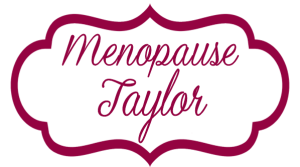Fifty Shades of Black
A couple of weeks ago, I was riding in a South African taxi cab. The driver was a middle-aged fellow, with dark chocolate skin and pinkish lips. He’d been born and raised in Cape Town.
It’s my habit to talk to cab or Uber drivers. I like to show genuine interest in and kindness toward others. So, I strike up conversations about various issues — political, cultural, meteorological, familial, and the like.
On that particular day, we were talking about Eskom, the electric company.
I said, “I just can’t figure out what’s going on with the Eskom load shedding schedule for when the electricity will be turned off. They send out a warning that it’s going to happen … and then it doesn’t.”
The cab driver responded with, “That’s because Eskom is run by Black people, and they can’t get anything right.”
Huh? I was confused. Was our Black driver implying that he wasn’t Black but the Eskom people were?
A few days later, it happened again.
I was chatting with some of the employees in a shop on our street — two young Black women. They complained about their salaries, saying, “The Blacks discriminate against Coloured people. They never pay us enough.”
I changed the subject because … well, I really had no idea what to say. “You look dark enough to be Black to me” would have been inappropriate, although that’s what I was thinking. I was definitely confused.
My ex-husband, George, recalls an incident way back in the 1970s, when he was a hitchhiking hippie, catching rides from Cape Town to Nairobi. Most commonly, White people picked him up, since they were just about the only ones who owned cars. But once, an old jalopy stopped for him and he climbed in to join four other people … all of whom were Black. And as they rode down the street, George was taken aback. His fellow passengers and driver repeatedly pointed at Black people on the roadside and called them “the N word.” To George, there was no difference in the skin color of the people in the jalopy and the ones outside it.
So, what’s the deal with race in South Africa?
As it turns out, there is much more than just “Black” and “White” here. There are many shades of black in between.
Until 1991, there were four racial categories according to South African law: (1) Black, (2) White, (3) Indian, and (3) Coloured. Since then, these categories have been abolished, but South Africans still view themselves (and others) according to these categories. And that’s because the apartheid regime over-emphasized the differences between the racial groups and turned them against each other. The result was that the racial hierarchy was socially, culturally, legally, politically, and economically entrenched.
To an outsider, the population of South Africa appears to fall into only two groups: Black and White. But locals are adept at classifying people much more specifically. Here, there are multiple crucial shades of Light Black between Black and White.
“Coloured” refers to people who are of mixed Black and White descent. Most of this resulted from intermarriages between White settlers and African natives in the eighteenth and nineteenth centuries. But not all Coloured people possess the same ethnic background. Thus, they can have a variety of different features. Genetic studies suggest that Coloureds have the highest levels of mixed ancestry in the world.
In Cape Town, the discriminatory skills for distinguishing between Blacks and Coloureds are fine-tuned … and the discriminatory practices for detesting Blacks or Coloureds is also rather evident.
Coloureds are sub-classified into mixed race, biracial, light-skinned, and who knows how many other categories. But to be truly “Coloured,” both parents must be “Coloured.” If one parent is Black and the other is White, you’re not Coloured. To South Africans, Barack Obama isn’t Coloured. He’s biracial.
And while “Coloured” is a derogatory term in other parts of the world, here in South Africa, it has no such connotation. It’s no different than saying someone is Hispanic. (Granted, while there are really only three races in the world — Negroid, Caucasian, and Mongoloid — most people confuse “race” with “ethnicity.”)
The common theme for Coloureds is that they are too White to be Black and too Black to be White. But in South Africa, the differences in these shades of black go well beyond skin color: they’re cultural. They include language, folklore, religion, major holidays, rites of passage, living conditions, food, clothing, family life, education, heritage, employment, crafts, and social problems. Due to Apartheid, race, social class and culture have become inextricably linked.
So, as I ride with various Uber and taxi drivers, I hear occasional disdainful comments from various black-skinned individuals about other black-skinned individuals regarding this or that. And no matter how much I think I know my colors, I’m usually wrong. Black isn’t black; it’s a spectrum of color more nuanced than anything I ever imagined … all of which seem Black to me.
I wonder why there’s only one shade of White.


